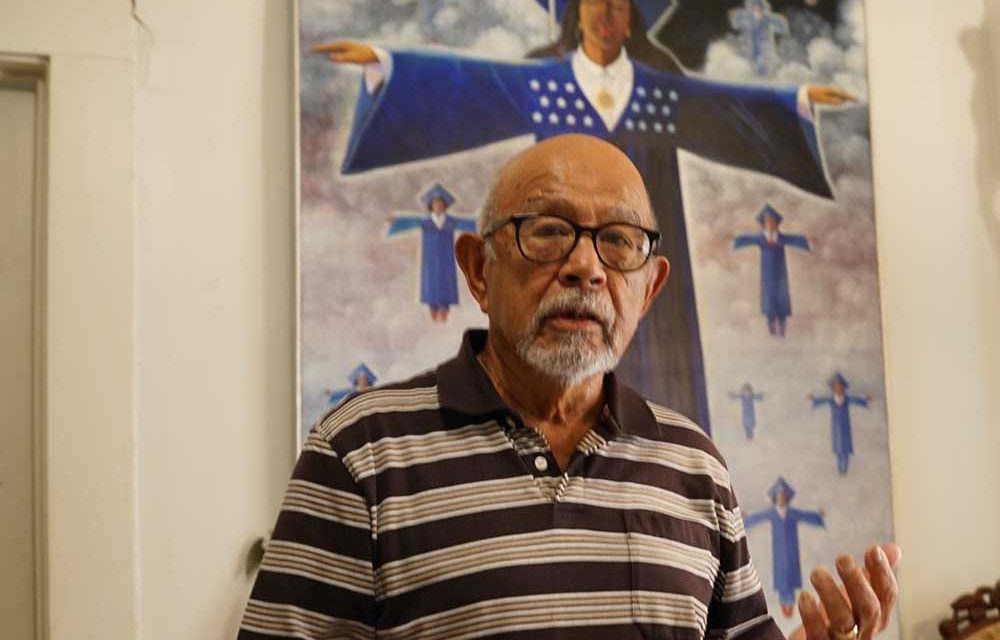Jose Esquivel, one of the founding members of the Chicano art movement in America, passed away on December 12, 2022. He was 87 years old. A memorial to Esquivel is planned for Tuesday evening, January 3rd at the Centro Cultural Aztlan.
Through his paintings Esquivel documented life in his San Antonio community. His artist statement refers to that commitment: “My paintings are barrio scenes that are reminders or memories of familiar places. The symbolism depicts some of our cultural beliefs and also the condition and struggles of a segment of people in our society.”
Esquivel’s art training began at San Antonio Technical and Vocational High School in the early 1950s and continued with his training at the Warner Hunter School of Art in San Antonio’s La Villita district. Hunter personally assisted low-income students with scholarships. Esquivel studied with Hunter for five years learning line drawing, watercolor, and oil painting.
Few Latino artists in San Antonio could make a living in fine art painting, thus Esquivel found work as a commercial artist at City Public Service. He also worked in the evenings and weekends as a sign maker for the hotel industry. In an era before computers and digital printing, all hotel notices and signs were designed by in-house commercial artists.
A group of local Chicano artists formally organized when Felipe Reyes joined Esquivel, Jesse Almazan, and Jesse “Chista” Cantu at the Almazan Gallery in La Villita.
Initially calling themselves El Grupo, the members invited San Antonio College art professor Mel Casas to join. Casas proposed that they call their art collective Con Safo.
When Esquivel began his association with El Grupo, a precursor to Con Safo, the American art world knew almost nothing about Latino or Mexican American art. Esquivel documented this art movement, including the preparation of the first Chicano art exhibits in Texas and the Midwest in the early 1970s.
Tomas Rivera, a pioneering writer of Chicano literature, assisted the Con Safo art group to arrange an exhibition to travel to several Midwestern cities in 1972.
After Esquivel left the Con Safo group in 1974 he painted Texana art. His priorities shifted, and he devoted his artistic energies to art that would give him financial stability and enable him to send his children to college.
Curators with the new Smithsonian Latino Museum recently connected with Jose Esquivel requesting all of his papers as well as examples of his art for their archives. Esquivel’s artistic journey is an important part of Chicano art history. Dozens of old photographs in Esquivel’s home studio reveal the story of his artistic journey. His art sold well, and he was proud to support his son’s education at the Pratt Institute. Esquivel’s art on display curated by Malena Gonzalez-Cid at the Centro Cultural Aztlan aptly shows his creativity and exceptional ability to interpret the Chicano experience in America.






